For bass players, the debate between using fingers or a plectrum (pick) is ongoing. While traditionalists often advocate for fingerstyle playing, citing its tonal versatility and nuanced control, many bassists find that using a plectrum provides a distinct attack, clarity, and power to their bass lines. But if you decide to explore playing bass with a plectrum, how do you choose the best one?
This guide dives deep into the world of Bass Guitar Plectrums. We’ll explore the advantages and disadvantages of using plectrums versus fingers, examine various plectrum materials, thicknesses, and shapes, offer recommendations, and answer frequently asked questions to help you find the perfect plectrum for your bass playing style.
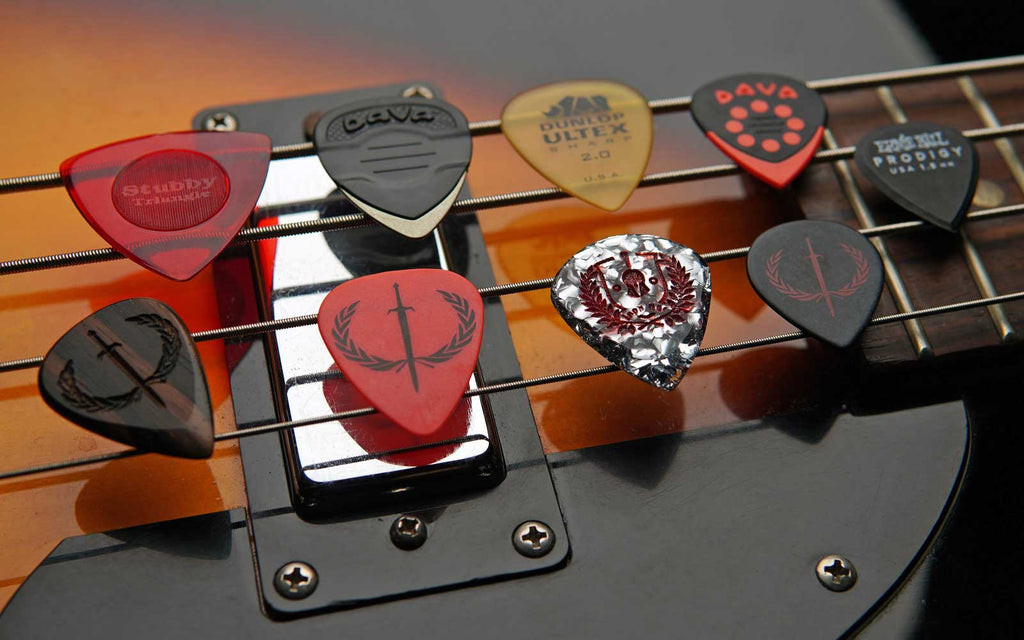 Iron Age Guitar picks for bass, guitar strings, bass players
Iron Age Guitar picks for bass, guitar strings, bass players
Fingerstyle vs. Plectrum: Weighing the Options for Bass
The choice between using your fingers or a plectrum on bass significantly impacts your sound and playing experience. Let’s break down the pros and cons of each approach:
Fingerstyle Bass Playing – Advantages:
- Tonal Versatility: Fingerstyle playing unlocks a wide spectrum of tones. Plucking with different fingers, closer to the bridge or neck, and varying your attack allows for warm, rounded tones perfect for genres like jazz, funk, and reggae.
- Dynamic Control: Your fingers offer exceptional dynamic control. You can effortlessly adjust volume and intensity, enabling expressive and nuanced playing. This sensitivity is crucial for conveying emotion and subtle variations in your bass lines.
- Technique Diversity: Fingerstyle playing facilitates advanced techniques such as slapping, popping, and tapping. These techniques add unique percussive and melodic textures to your bass playing, expanding your sonic palette.
Fingerstyle Bass Playing – Disadvantages:
- Less Attack and Clarity: Compared to using a plectrum, fingerstyle playing can produce a smoother, more blended sound with less initial attack and note separation. This can be a drawback in genres like rock or metal where a more aggressive and defined bass line is needed to cut through the mix.
- String Wear and Finger Fatigue: Consistent finger contact with bass strings can lead to faster string wear and potential finger fatigue, especially during long practice sessions or performances. This might necessitate more frequent string changes and require building finger calluses.
- Steeper Learning Curve: Mastering fingerstyle technique requires dedicated practice to develop finger independence, precision, and speed. Achieving proficiency can take longer for beginners compared to using a plectrum, which offers a more immediate and consistent attack.
Bass Guitar Plectrums – Advantages:
- Enhanced Attack and Articulation: Bass guitar plectrums deliver a more aggressive attack, resulting in greater note definition and clarity. This is particularly beneficial in genres like rock, punk, and metal where the bass needs to stand out and provide a strong rhythmic foundation.
- Consistent Tone and Volume: Plectrums provide a consistent tone and volume across various playing styles and techniques. This consistency simplifies achieving a uniform sound throughout a performance, especially when switching between different parts of a song.
- Reduced Finger Fatigue: By eliminating repetitive finger plucking, plectrums minimize finger fatigue. This advantage is significant for extended playing sessions, rehearsals, or lengthy live performances, allowing you to play longer with comfort and precision.
Bass Guitar Plectrums – Disadvantages:
- Limited Tonal Range: Plectrums tend to produce a brighter, more percussive sound with pronounced high-midrange frequencies. This tonal characteristic might not be ideal for genres that demand warmer, mellower bass tones, such as smooth jazz or certain styles of blues.
- Reduced Dynamic Subtlety: Achieving the same level of dynamic nuance and subtle variations in volume and attack can be more challenging with a plectrum compared to fingers. While skilled players can achieve dynamic control with a plectrum, it requires practice and a different approach.
- Technique Restrictions: Certain advanced fingerstyle techniques, like slapping and popping, are either impossible or significantly more difficult to execute effectively with a plectrum. Players who rely heavily on these techniques might find plectrums limiting.
Ultimately, the decision to use fingers or a plectrum is deeply personal and depends on your playing style, musical genre, and desired sound. Experimenting with both techniques is highly recommended to discover what feels most natural and helps you achieve your musical goals.
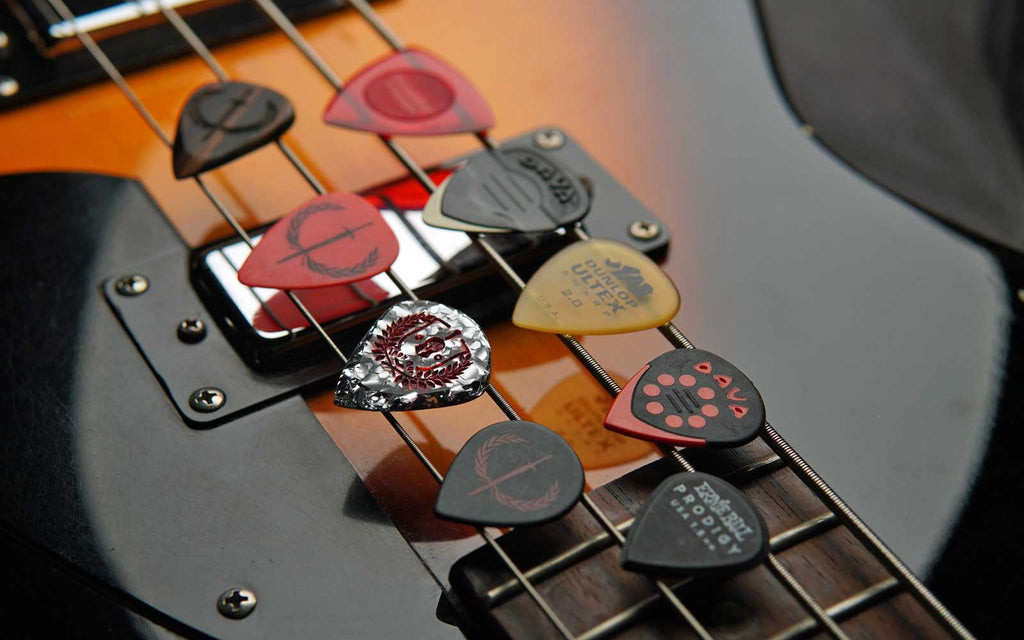 bass players, bass guitarists, bass guitars, playing bass guitar
bass players, bass guitarists, bass guitars, playing bass guitar
Exploring Bass Guitar Plectrum Materials
The material of your bass guitar plectrum significantly influences its tone, feel, and durability. Let’s explore popular materials:
Acrylic:
Acrylic plectrums, sometimes replaced by Plexiglass or Lexan, are less common but excellent for producing a bright, articulate sound. They have a stiff, slightly brittle feel and offer exceptional consistency in tone. Lexan is notably used in Dunlop “Stubby” plectrums, favored for their bright attack and durability.
Delrin/Polyoxymethylene (POM):
Delrin or POM plectrums are celebrated for their matte finish, superior grip, and robust durability. They produce a bright and focused tone with enhanced attack, making them ideal for genres demanding precision and clarity, such as classic rock and metal. Variations of this material are found in popular lines like “Tortex picks” and “Gator Grip” plectrums, known for their reliable grip and consistent performance.
Metal:
Metal plectrums, crafted from stainless steel, brass, or even coins, offer a unique tonal character with heightened brightness and attack. Metal guitar plectrums generate a metallic, cutting sound, perfect for genres requiring an aggressive and pronounced bass tone, such as metal and hard rock. Their exceptional durability ensures they withstand heavy use.
Nylon:
Nylon plectrums are a favored choice among bassists for their versatility. They provide a balanced tone with a snappy attack, suitable for a broad spectrum of musical styles. Nylon offers excellent flexibility and durability, contributing to comfortable playing and extended lifespan. “Dava Control Grips” are a notable example, known for their nylon construction and innovative grip design.
Synthetic Stone & Alternative Synthetics:
Synthetic stone plectrums, like the Iron Age “Medusa plectrum,” blend acrylic and stone to offer a unique tonal profile. They combine the brightness of acrylic with the density of stone, providing a distinctive sound.
Alternative synthetic materials, such as faux ivory or bone, offer different tonal and tactile experiences. Iron Age “Parthenon Collection” plectrums, made from synthetic ivory, feature a matte finish for enhanced grip and a subtle bite due to satin bevels, offering a unique playing feel.
Ultem (PEI):
Ultem (PEI) stands out as a top contender for bass plectrum durability. Similar to acrylic but significantly tougher, Ultem feels stiff and brittle yet is remarkably resilient. Highly recommended as a guitar plectrum for metal, Ultem plectrums are equally robust for electric bass, enduring aggressive playing styles.
Wood:
Wood guitar plectrums provide an exquisite and organic playing experience. Offering a distinct feel compared to other materials, wood plectrums provide excellent grip and a warm, mellow tone, lacking the “clanky” sound of metal, acrylic, or plastic plectrums. They are ideal for bassists seeking a natural and warm sound.
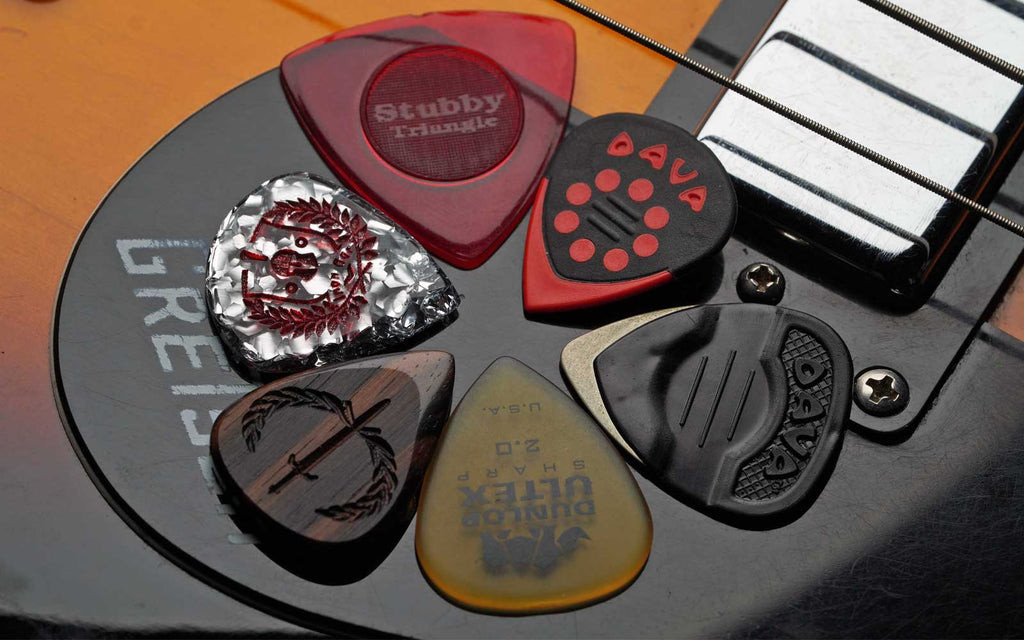 guitar picks material, bass players, play bass, thicker pick, bass tones
guitar picks material, bass players, play bass, thicker pick, bass tones
Bass Guitar Plectrum Thickness: Shaping Your Sound
The thickness of your bass guitar plectrum is a crucial factor influencing both playability and tone. Different thicknesses offer distinct characteristics:
Thin Bass Guitar Plectrums (0.5mm – 0.75mm):
Thin bass plectrums offer greater flexibility and a lighter touch. They bend easily and produce a delicate yet snappy attack on the strings. Ideal for players who prefer a softer, smoother tone with less emphasis on strong dynamics and more on a percussive, rhythmic feel.
Medium Bass Guitar Plectrums (0.75mm – ~1.5mm):
Medium thickness plectrums strike a balance between flexibility and rigidity. They provide moderate give while maintaining adequate control. Medium plectrums offer a versatile tonal range, balancing attack, dynamics, and articulation. They are widely used across various music genres and are a reliable choice for bassists seeking a balanced sound suitable for diverse playing styles.
Thick Bass Guitar Plectrums (1.5mm +):
Thick plectrums introduce rigidity and a powerful attack to your bass lines. They offer less flexibility but more control, enabling precise picking and aggressive playing. With enhanced string articulation, thick plectrums produce a brighter and more focused tone. They are perfect for genres demanding a punchier, more defined bass sound, such as rock, punk, and metal. Thicker bass plectrums also provide a more consistent and stable grip, which can be beneficial for players with larger hands or those who prefer a more substantial feel.
Bass Guitar Plectrum Shapes: Precision vs. Punch
The shape of your bass guitar plectrum is another key consideration. Sharp points offer precision, while rounded edges deliver a punchier tone. Shape preference is also tied to hand size and personal comfort.
Standard/Traditional Shape:
The standard or traditional plectrum shape, like the classic Fender 351, features rounded triangular or teardrop edges. This widely used shape provides bassists with a versatile option, offering a balanced blend of control, flexibility, and attack. The rounded tip ensures smooth string contact, resulting in a well-rounded tone suitable for various playing styles and genres.
Jazz Shape:
Jazz plectrums are smaller and more compact than standard shapes. Typically featuring a rounded or slightly pointed tip and a reduced overall size, jazz plectrums are popular among bassists in genres like jazz, rock, and metal. They facilitate precise and nimble playing, offering increased control for intricate passages and a faster response due to their smaller surface area. Jazz plectrums can produce a slightly brighter and more focused tone, favored for fast and articulate bass lines.
Triangular Shape:
Triangle plectrums, available with varying point sharpness, are excellent for players with larger hands. These bigger plectrums provide an expanded gripping surface, enhancing control and stability. Their three points also increase durability and extend the plectrum’s usable life. While less common than standard or jazz shapes, triangular plectrums cater to a specific niche of players who value grip and longevity.
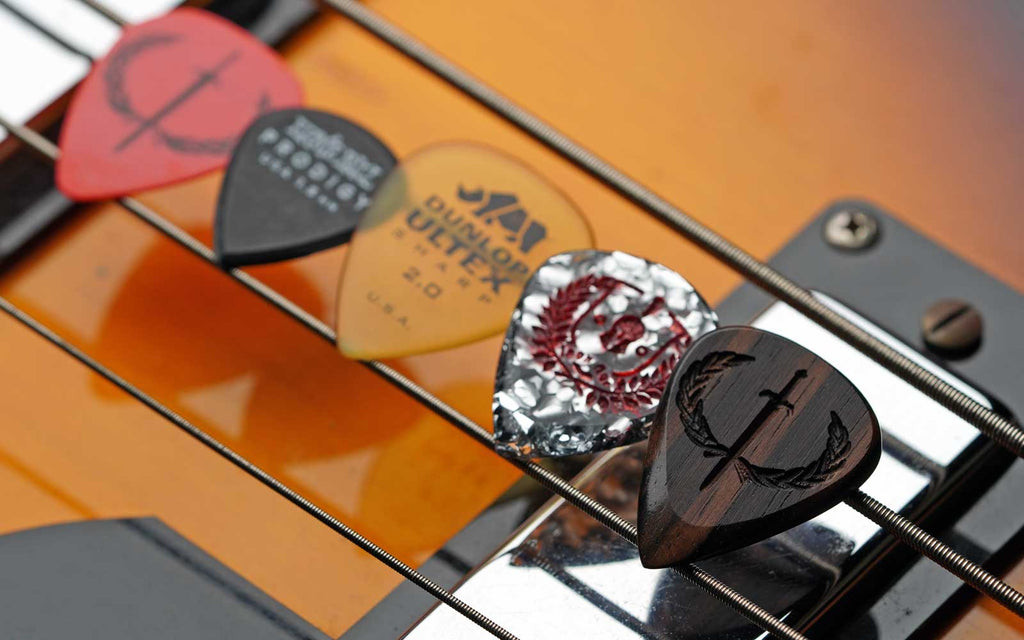 bass guitar picks shape, bass players, guitar gear, pick material
bass guitar picks shape, bass players, guitar gear, pick material
Genres Where Bass Guitar Plectrums Excel
While plectrums can be used in virtually any genre, they are particularly favored in certain styles:
Rock:
Rock bassists frequently use plectrums to achieve a more aggressive and pronounced sound. A plectrum helps the bass cut through the mix, delivering a punchier tone crucial for high-energy rock songs.
Punk:
Punk music, characterized by fast and aggressive bass lines, often demands the attack and intensity that a plectrum provides. Plectrums enable the speed and rhythmic drive essential to punk bass playing.
Metal:
In numerous metal subgenres, plectrums are essential for creating fast and precise bass lines that complement heavy guitars and drums. Plectrums facilitate the speed, clarity, and articulation required for genres like thrash metal and metalcore.
Pop:
Certain pop music styles, especially those with a strong rhythmic emphasis and prominent bass lines, benefit from the distinct and articulate sound of a plectrum. It can add definition and punch to pop bass, enhancing the rhythmic groove.
Alternative:
In alternative rock and related genres, plectrums help bassists achieve a more focused and defined sound. The articulate nature of plectrum playing creates a distinct rhythmic texture that complements the genre’s unique sonic aesthetic.
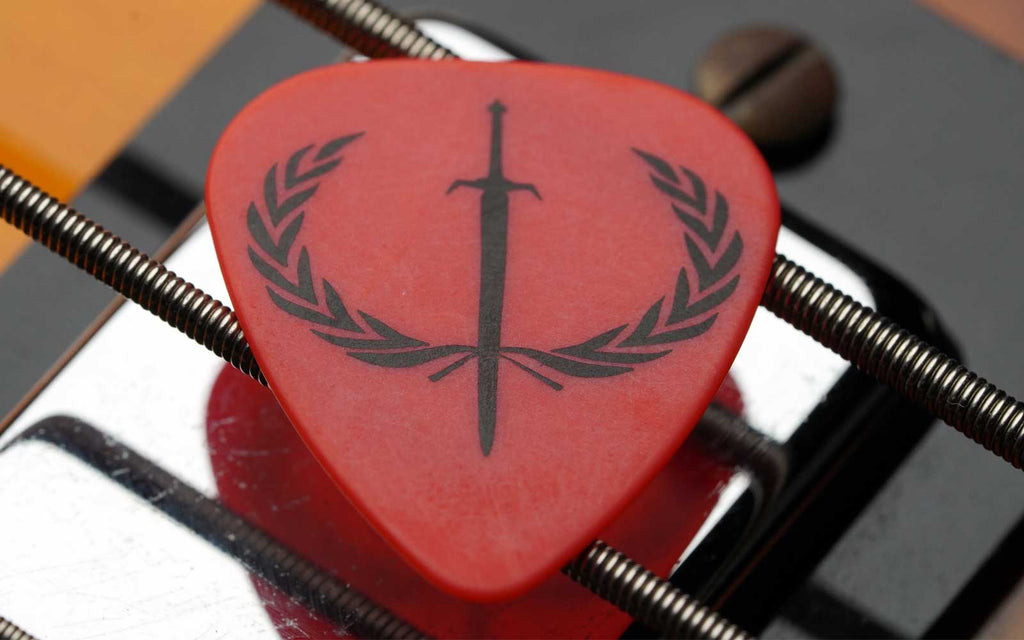 iron age bass picks, play chords, sharp tip, nylon picks, thinner picks, teardrop pick, thinner plectrum
iron age bass picks, play chords, sharp tip, nylon picks, thinner picks, teardrop pick, thinner plectrum
Iconic Bassists Known for Using Plectrums
Many famous bassists have utilized plectrums to shape their signature sounds. Here are a few notable examples:
Paul McCartney:
As a member of The Beatles, Paul McCartney popularized plectrum use on bass. His melodic bass lines and energetic plectrum style are evident in Beatles classics like “Helter Skelter” and “Taxman.” McCartney’s innovative approach demonstrated the versatility of plectrums in pop and rock music.
Roger Waters:
Pink Floyd’s bassist and lyricist, Roger Waters, frequently employed a plectrum to create the driving and powerful bass lines that became a hallmark of the band’s sound. Songs like “Money” and “Another Brick in the Wall (Part 2)” showcase his skillful plectrum technique, contributing to Pink Floyd’s iconic sonic landscape.
John Paul Jones:
Best known for his versatile bass playing in Led Zeppelin, John Paul Jones often used a plectrum to craft the dynamic and punchy bass lines heard in tracks like “Dazed and Confused” and “Good Times Bad Times.” His precise plectrum attack played a crucial role in Led Zeppelin’s heavy and influential sound.
John Entwistle:
The Who’s bassist, John Entwistle, was renowned for his intricate plectrum bass playing. His rapid and precise picking style provided a driving force to iconic songs such as “My Generation” and “Baba O’Riley,” solidifying his status as a plectrum virtuoso.
Dee Dee Ramone:
Dee Dee Ramone, founding member and bassist of the punk rock band Ramones, used a plectrum to achieve the fast and aggressive style synonymous with the band’s sound. Tracks like “Blitzkrieg Bop” and “Sheena Is a Punk Rocker” feature his brisk plectrum playing, defining the raw energy of punk bass.
Iron Age Bass Guitar Plectrum Recommendations
Iron Age offers a selection of handcrafted plectrums perfect for bassists:
Iron Age Assorted Delrin Plectrums:
This pack provides a variety of thinner plectrums and jazz shapes in Delrin, similar to Gator Grip Picks. Ideal for exploring different thicknesses and shapes, these plectrums are excellent for bass playing due to Delrin’s grip and balanced tone.
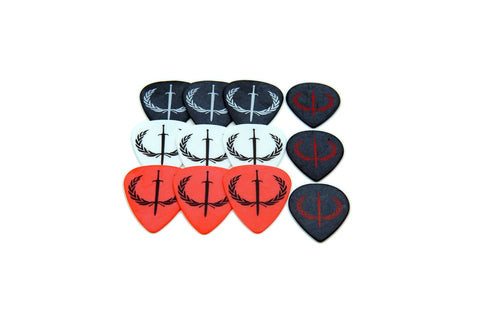 iron age delrin guitar plectrums
iron age delrin guitar plectrums
Ivory Jazz XL Plectrums:
For those seeking thicker plectrums with a punchy tone, the Ivory Jazz XL plectrums are an excellent choice. Made from faux ivory with a matte texture, they produce a brighter tone and offer excellent grip. Rated among Iron Age’s top 10 plectrums, they are well-suited for bass guitar, providing both clarity and power.
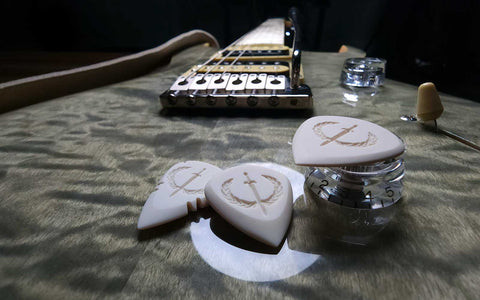 jazz 3 jazzxl ivor ivoroid handcrafted plectrums
jazz 3 jazzxl ivor ivoroid handcrafted plectrums
Ragnarok Odin’s Horn Acrylic Triangle Plectrums:
These acrylic triangle plectrums are designed for players with larger hands. Offering three picks in one, a brushed texture for enhanced grip, and glow-in-the-dark engraving, Odin’s Horn plectrums are durable and provide excellent control, making them ideal bass plectrums for large hands.
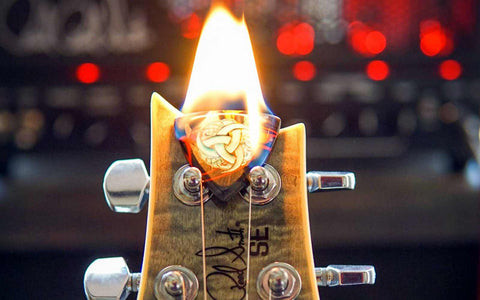 odins horn acrylic plectrum tripick
odins horn acrylic plectrum tripick
Recommended Bass Guitar Plectrums from Other Brands
Beyond Iron Age, several other brands offer excellent bass guitar plectrums:
Tortex Flow Plectrums:
Tortex Flow shapes, also known as “JD 208,” provide a large grip surface and a semi-sharp point. These plectrums offer a well-balanced option for bass guitar, combining control and versatility. They are also available in Ultem material, offering enhanced durability and a brighter tone.
Dunlop Jazz XL Plectrums:
The Dunlop Jazz XL shape is a favorite among guitarists and works exceptionally well for bass. For players with smaller hands, the Jazz III variant is also worth considering. Made from nylon, these plectrums are known for their nimble playability, excellent control, and good durability, making them a top choice for bassists seeking precision and speed.
Ernie Ball Prodigy Tripicks:
For a more metal-oriented approach to bass playing, the Ernie Ball Prodigy lineup offers several plectrum shapes, including variety packs for experimentation. These thicker plectrums help bass lines stand out with minimal pick noise and provide excellent picking control, ideal for aggressive and articulate bass playing in heavier genres.
Frequently Asked Questions About Bass Guitar Plectrums
Can you use guitar plectrums for bass?
Yes, guitar plectrums and bass plectrums are interchangeable. Using a guitar plectrum on bass can produce a brighter and more defined attack, emphasizing higher frequencies. This can be particularly effective in genres requiring an aggressive and pronounced bass sound, such as rock or metal.
What plectrums should I use for bass guitar?
Thicker plectrums are generally recommended for bass guitar as they withstand the tension of heavier bass strings better and produce a solid, impactful tone. These plectrums offer the necessary rigidity, control, and durability. However, thinner, more flexible plectrums can also be used to achieve a snappier, more percussive sound, depending on your tonal preferences.
Do you need a guitar plectrum for bass guitar?
No, a guitar plectrum is not essential for playing bass guitar. Many bassists prefer fingerstyle or a combination of fingerstyle and slapping techniques. Fingerstyle allows for greater dynamic control and tonal variation. However, a plectrum offers a different tonal character with a sharper attack and increased articulation, making it a valuable tool for bassists seeking a distinct sound or needing to cut through a dense mix. The choice between plectrum or fingers is ultimately a matter of personal preference and musical context.
Are bass plectrums and guitar plectrums the same?
Yes, there are no dedicated “bass plectrums.” Guitar plectrums can be used for both guitar and bass interchangeably. The distinction lies in material, thickness, and shape preferences based on playing style and instrument.
Do you strum or pick a bass guitar?
While strumming is common on guitars, bass guitar playing primarily involves plucking or picking individual notes or chords with fingers or a plectrum. Strumming is not typically used on bass in the same way as on guitar. Bassists focus on creating defined and rhythmic bass lines using plucking or picking techniques.
Do metal bassists use a plectrum?
Yes, many metal bassists use plectrums. Plectrums offer several advantages in metal music, providing a more aggressive and precise attack, contributing to the genre’s heavy sound. Plectrums enable faster and more consistent picking patterns crucial for rapid and intricate bass lines often found in metal. Additionally, plectrums help the bass cut through the dense mix of guitars and drums, ensuring the bass line remains prominent and impactful.
Is it better to have bass strings closer to pickups or farther?
The optimal string height relative to pickups is a matter of personal preference and desired tone. Closer strings to pickups generally result in a more focused and defined tone with increased attack and clarity. Conversely, strings farther from pickups can yield a rounder, warmer sound with enhanced sustain. Experimenting with different string heights and finding the balance that suits your playing style and desired tone is key to optimizing your bass sound.
Alex Rodea
Author
Founder of Iron Age, my guitar journey began in 2006, fueling a passion for crafting premium guitar accessories that embody timeless style & innovative expression. Through my Stay Tuned Guitar site I also share tips & info for new guitarists, offering everything from beginner tutorials to DIY tips & general music knowledge.

 tortex flow plectrum
tortex flow plectrum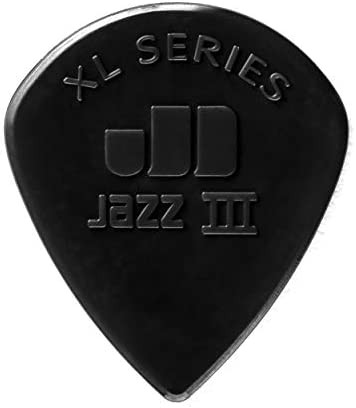 jazz3 jazzxl
jazz3 jazzxl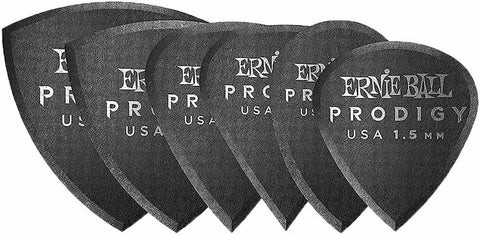 prodigy plectrums
prodigy plectrums